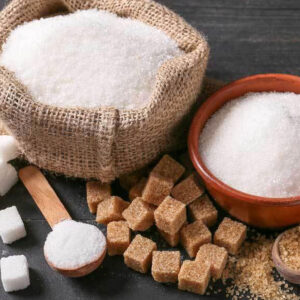Understanding beet sugar vs cane sugar helps shoppers make informed choices about their sugar preferences.
Understanding beet sugar vs cane sugar helps shoppers make informed choices about their sugar preferences.
Blog Article
Comprehending the Nutritional Benefits of Beetroot Sugar Vs Walking Stick Sugar for Health Conscious Consumers
When examining the nutritional implications of beetroot sugar versus walking stick sugar, health-conscious consumers discover that both varieties largely include sucrose and offer comparable caloric values, each adding around 16 calories per teaspoon. Regardless of this resemblance, neither type gives considerable health and wellness benefits, as they are devoid of important nutrients. Exploring the more comprehensive impacts, including ecological considerations and lasting health and wellness results of sugar consumption, could illuminate a lot more nuanced differences between these 2 sugars.
Nutritional Account and Caloric Value of Beet Sugar and Walking Stick Sugar
Although both beet sugar and walking cane sugar are mostly composed of sucrose, their nutritional accounts and caloric values are remarkably comparable. There are trace differences in the pollutants that stay after processing, which can slightly affect the flavor and color of the sugars, but these are minimal in terms of wellness influence. For customers concentrating on nutritional influence, the selection between beet and cane sugar is extra about individual choice or prospective environmental problems rather than dietary distinctions.
Environmental Impact and Sustainability of Sugar Production
While the nutritional differences between beetroot sugar and walking cane sugar are minimal, their production procedures present even more significant disparities, particularly in regards to ecological influence and sustainability. Walking cane sugar manufacturing commonly involves considerable land use and logging, which contributes to environment destruction and biodiversity loss. This farming is likewise related to high water intake and water pollution as a result of the runoff of pesticides and plant foods. In comparison, beetroot sugar manufacturing usually calls for less land and can be cultivated in even anonymous more pleasant climates, which may lower the need for irrigation and the associated water resource exhaustion.
Nonetheless, beetroot farming is not without its environmental challenges; it involves significant power inputs, specifically in the north environments where it is expanded, due to the need for longer heating durations in sugar handling. Both sugar beet and sugar walking cane sectors are discovering extra lasting techniques, consisting of plant turning, chemical-free farming, and enhanced waste administration methods to alleviate these effects.
Health And Wellness Consequences and Recommendations for Sugar Intake
Despite their very little nutritional differences, both beet sugar and cane sugar can have harmful health effects when eaten in excess. High intake of either type of sugar adds to a variety of health and wellness problems, including excessive weight, kind 2 diabetes mellitus, and heart problem. Both sugars are pure sucrose and offer no vital nutrients besides calories, resulting in rapid spikes in blood sugar level levels upon intake.


Conclusion

Report this page